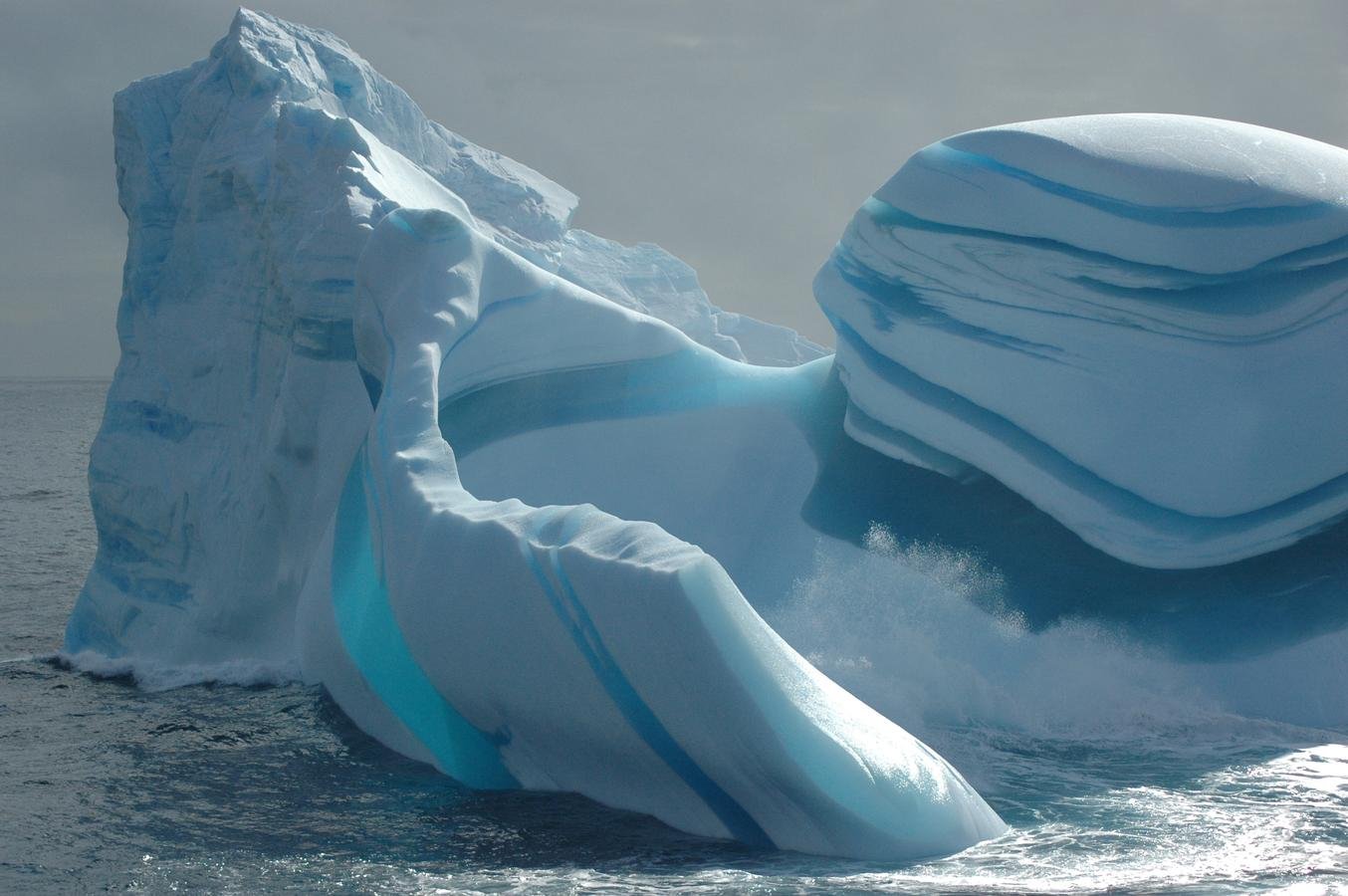
The contribution of the ice shelves of Antarctica to Southern Ocean circulation
Ben Galton-Fenzi
Australian Antarctic Division
Antarctic Climate & Ecosystems CRC
Antarctic Gateway Partnership
Ben.Galton-Fenzi@aad.gov.au
WHAt are ice shelves?
http://svs.gsfc.nasa.gov/vis/a000000/a003800/a003848/index.html
What are ice shelves?

What are ice shelves?

thick ice
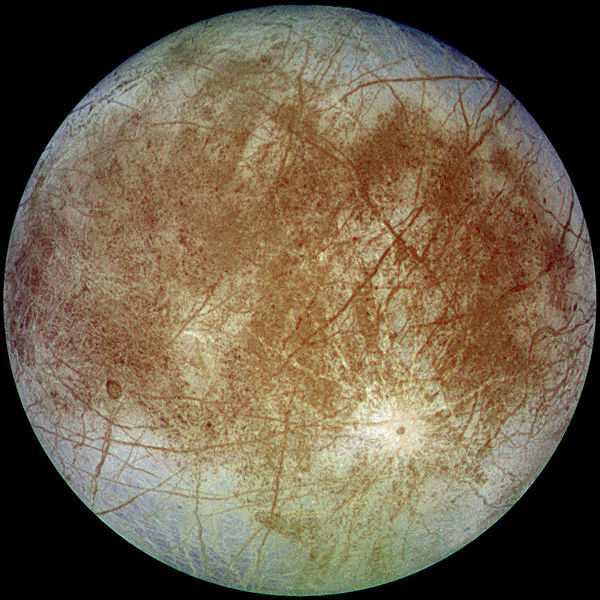
ice shelf mass budget
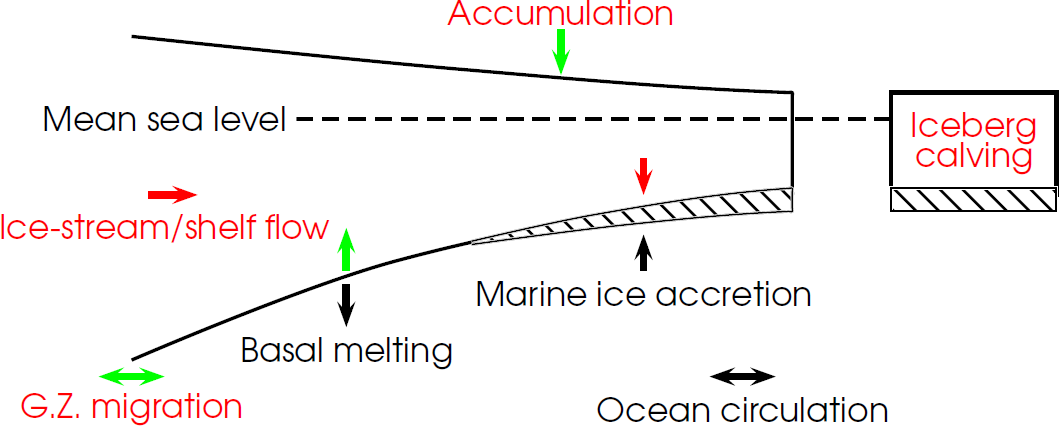
why do we care about ice shelves?
Sea level projections and observations
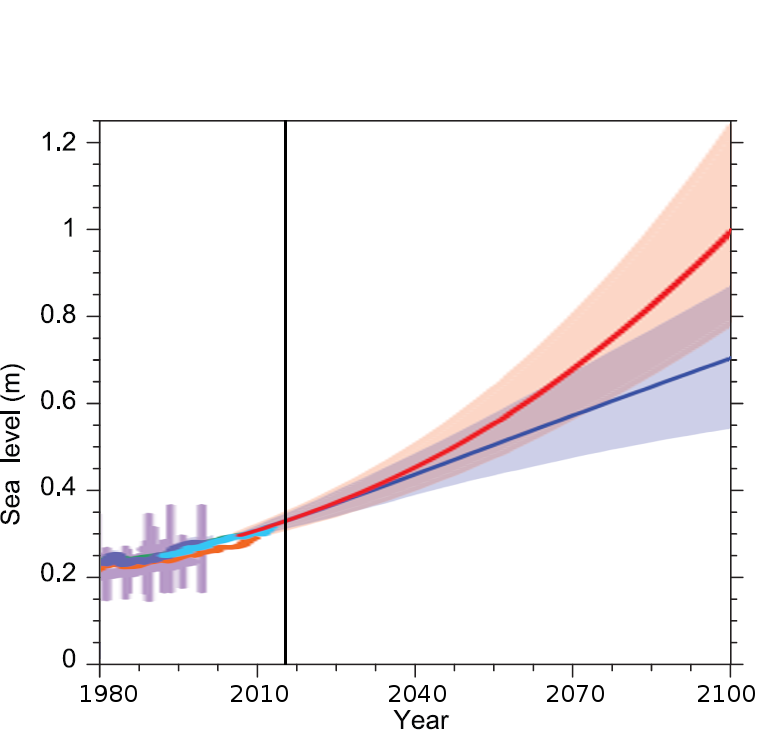
IPCC, AR5, 2013
"Larger sea level rise could result from sustained mass loss by ice sheets, and some part of the mass loss might be irreversible."
"Current evidence and understanding do not allow a quantification of either the timing of its onset or of the magnitude of its multi-century contribution."
Past sea level changes

Grant et al. 2014.
SMALL SCALES: ICE MELTING INTO SEAWATER
http://www.youtube.com/watch?v=olFzcye4iSs
Ocean impact
- Sea level 58.3 m
- Marine based ice sheet
- EAIS sle 19.2 m
- WAIS sle 3.4 m
- Cooling of 1.4 °C
- Freshening of 0.7 g kg-1

Orsi 1999
marine ice sheet instability
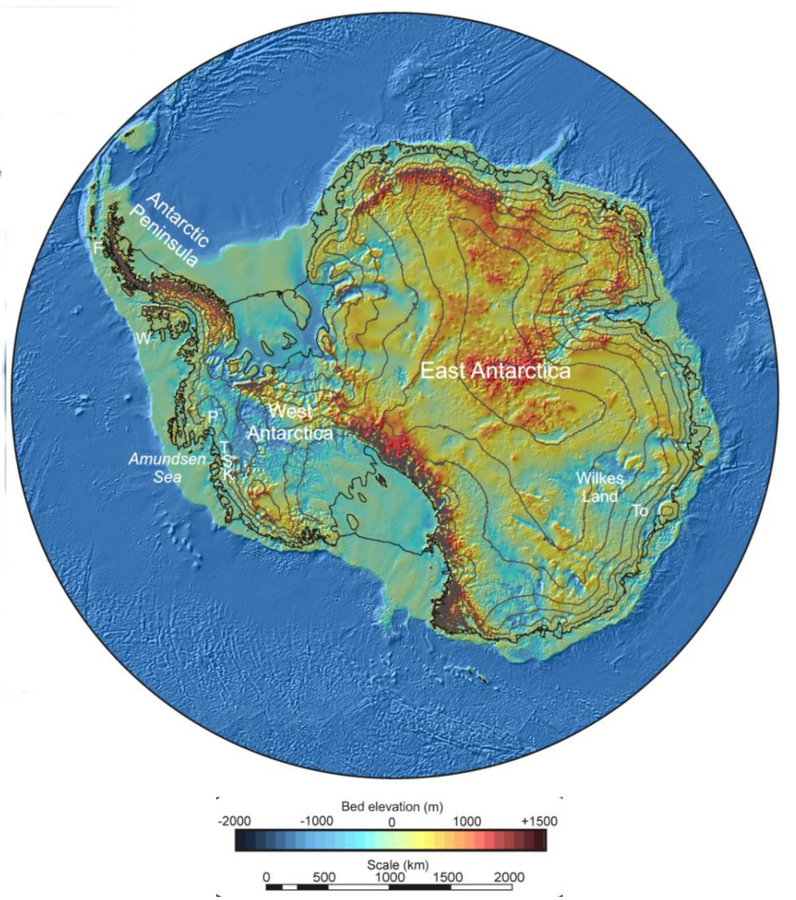
Fretwell et al. 2014
WAIS: Pine island glacier
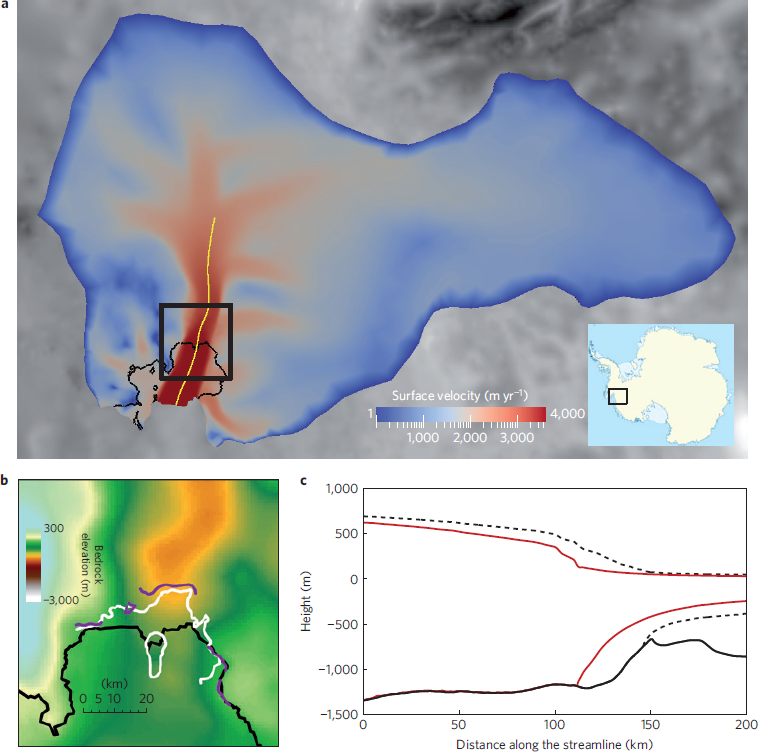
-
+ve feedback due to depth dependence on freezing point
-
Favier et al. 2014
observations of mass budget
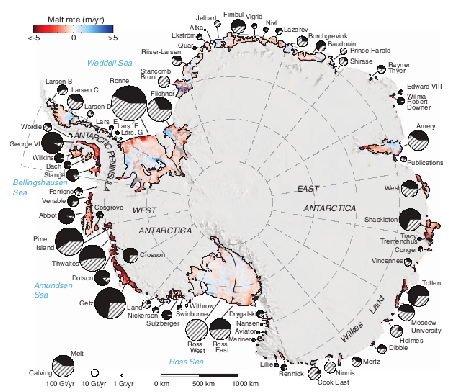
Rignot et al. (2013)
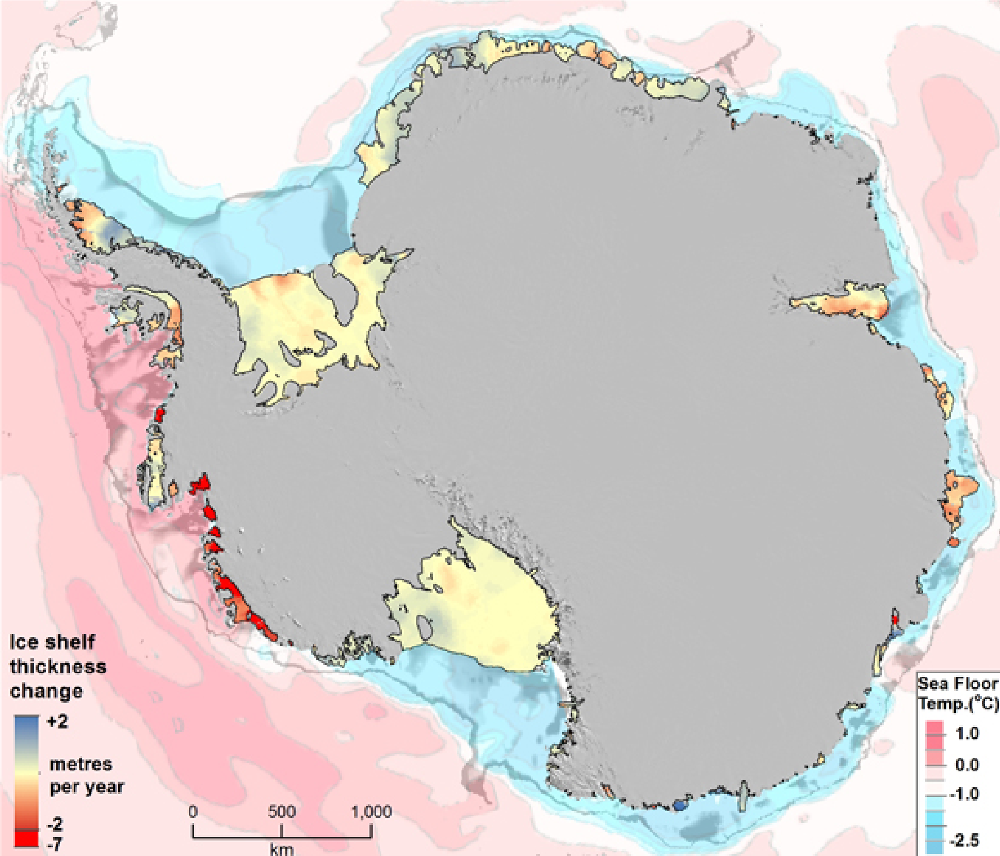
- Pritchard et al. 2012
Many ice shelves are thinning (2003-2009)
rapid thinning of totten
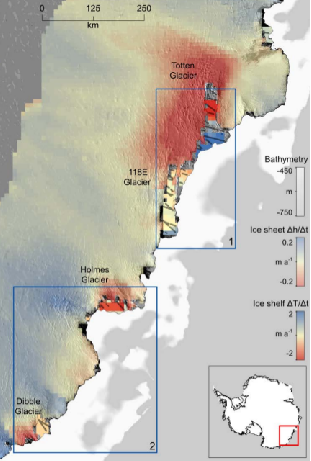
Totten Model results
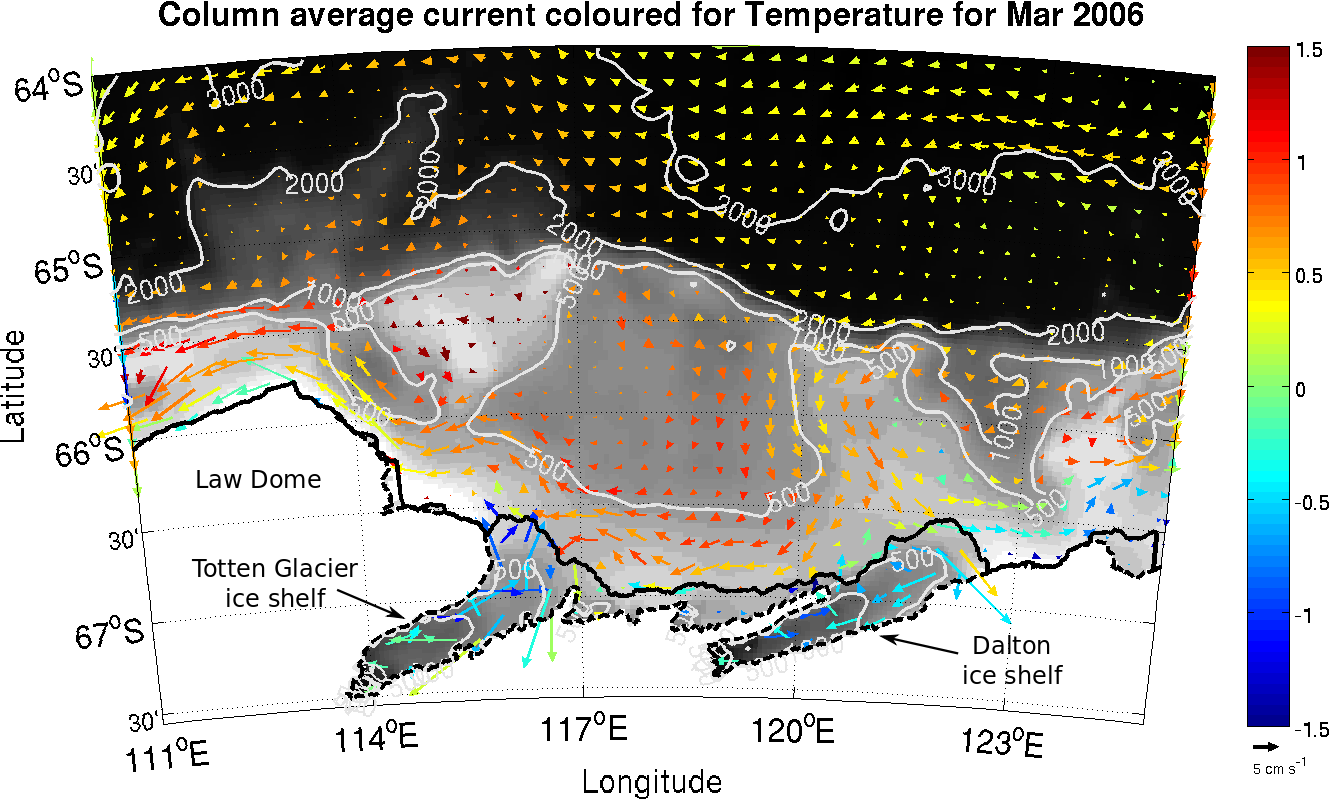
- Warm water drives high melting of deep ice (~2000 m below MSL)
- Mean melt rates ~60 % of glacier flux
- Gwyther et al. 2014. Ocean Sci.
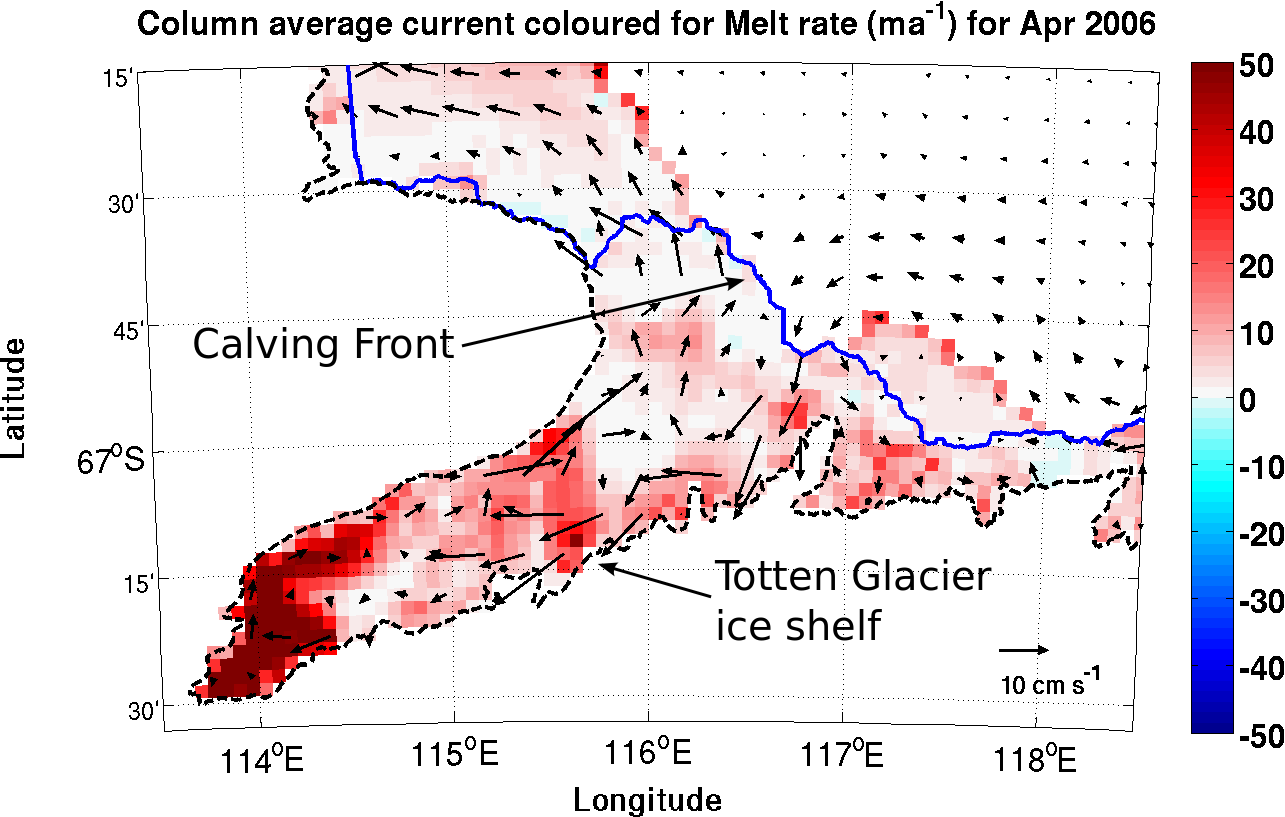
some concepts around ice/ocean interaction
freezing temperature
- Pure water at sea level: 0.0 degrees C
- Seawater at sea level: -1.9 degrees C
- Seawater at 500 m depth: -2.3 degrees C
- Seawater at 1000 m depth: -2.6 degrees C
FREEZING of seawater
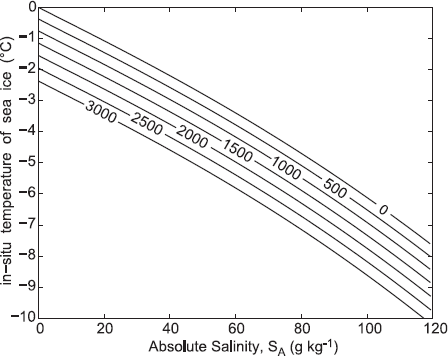
The in situ freezing temperature (8C) of air-free seawater as a function of pressure (dbar) and Absolute Salinity, determined
from the equilibrium freezing condition.

melting and freezing
jade icebergs
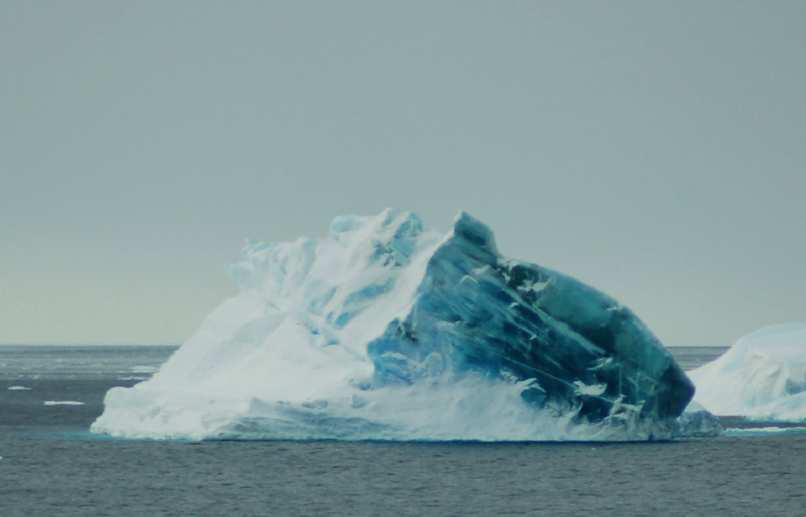
frazil formation
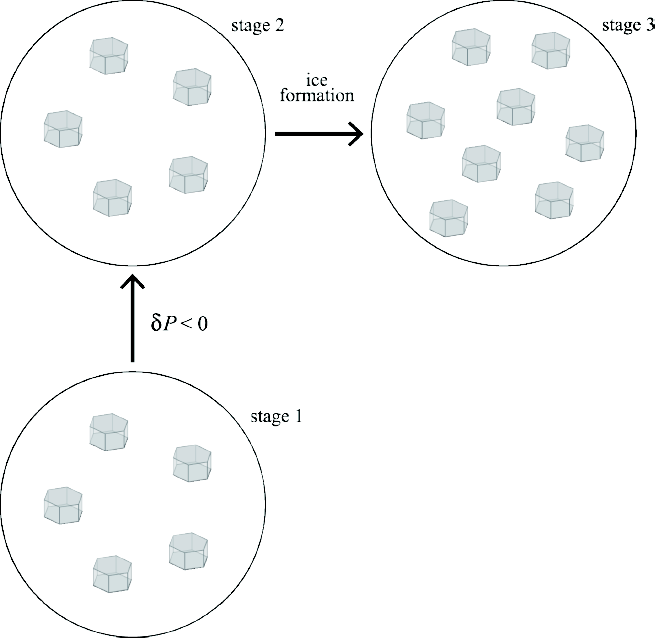
marine ice accretion
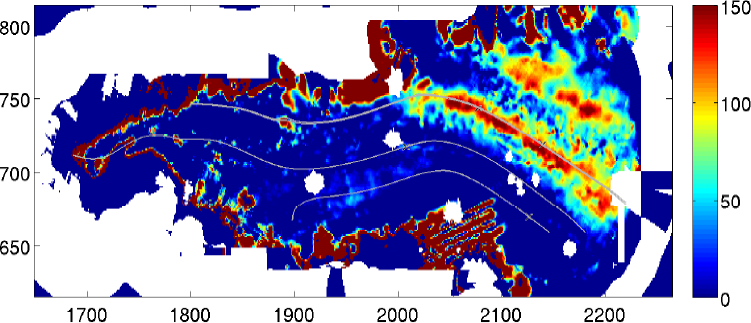
- Produced from difference between hydrostatic estimate of ice thickness from elevation and ice radar.
- Fricker et al (2001)
density


melting of ice into seawater
example from amery ice shelf
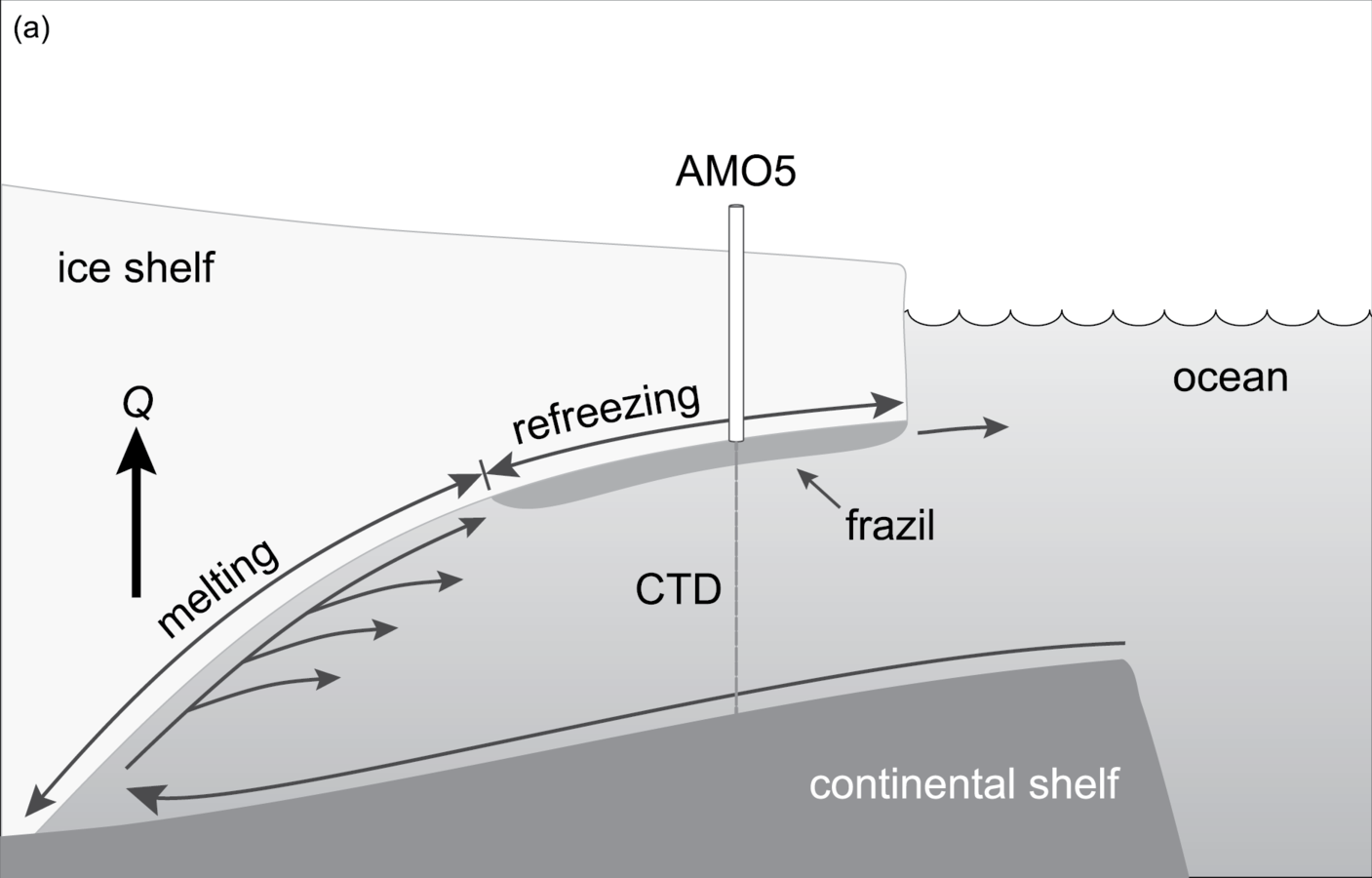
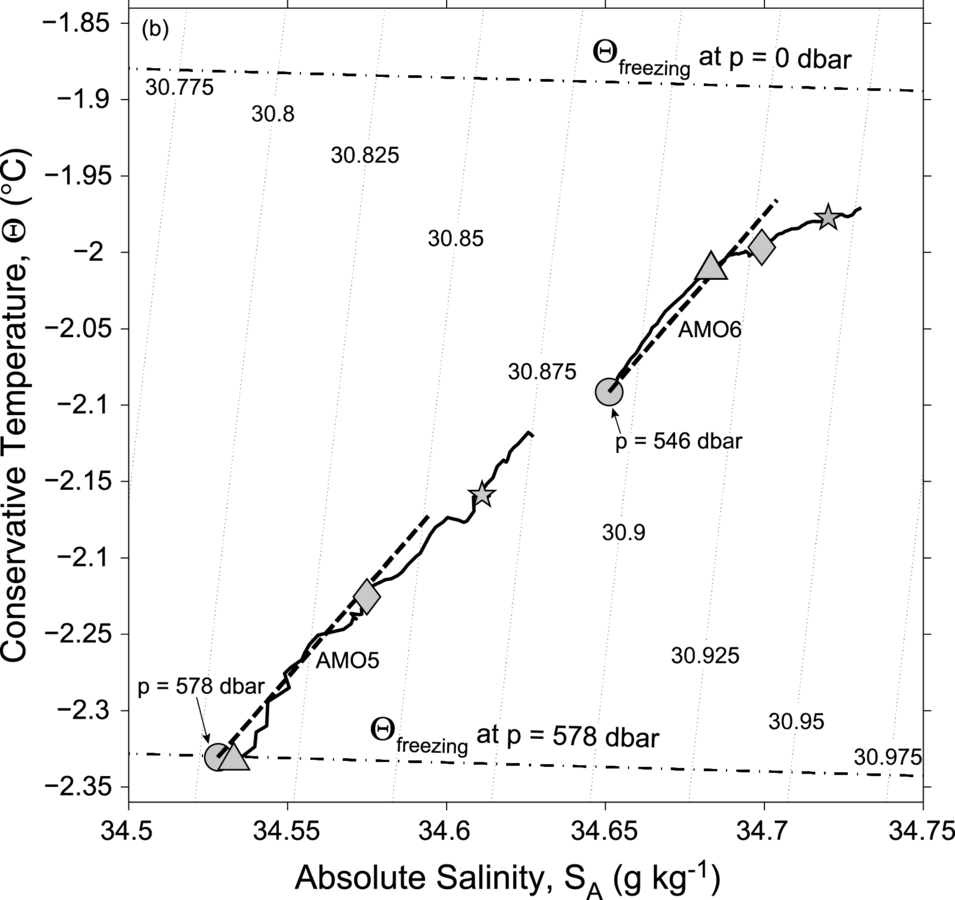
methods: ship

methods: AUV

methods: surface glaciology

methods: Remote sensing

methods: seals

methods: numerical modelling

large-scale circulation
modes of melting: jacobs (1992)
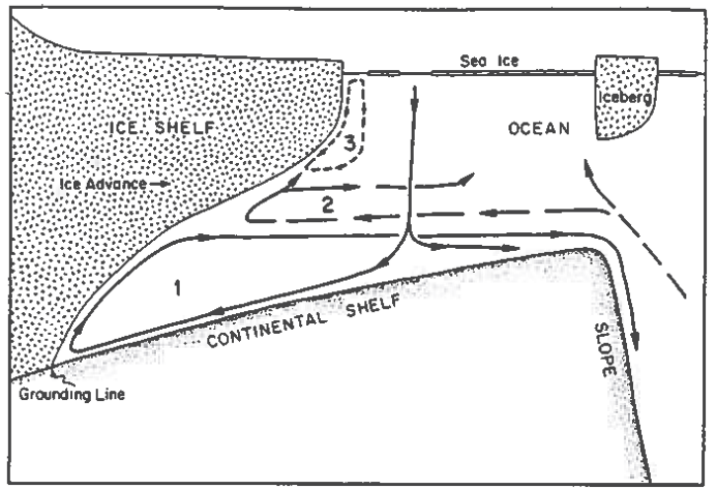
SKETCH OF HEAT FLUX DRIVING ICE SHELF MELT
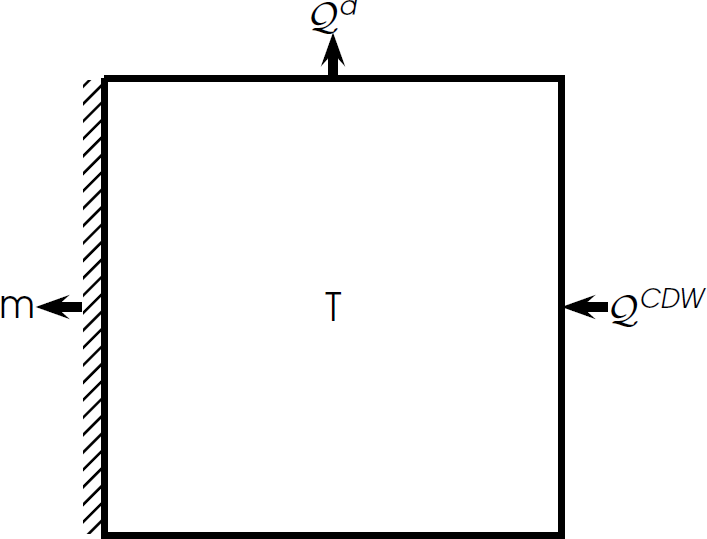
polynyas
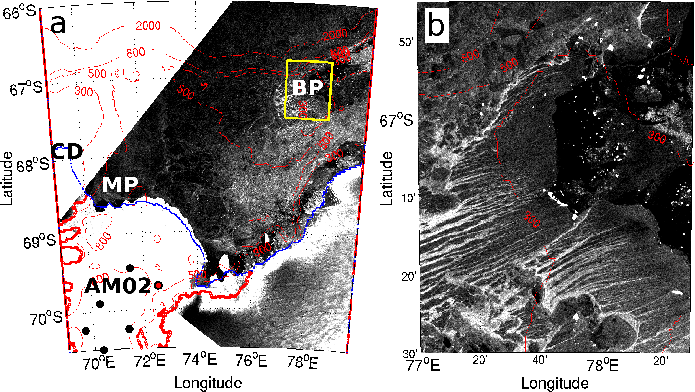
150 m grid spacing Envisat Advanced Synthetic Aperture Radar (ASAR) image from 28 August 2009 and the approximate location of the Barrier Polynya (BP), enlarged (b) and MacKenzie Polynya (MP)
increased ocean heat = increased melt
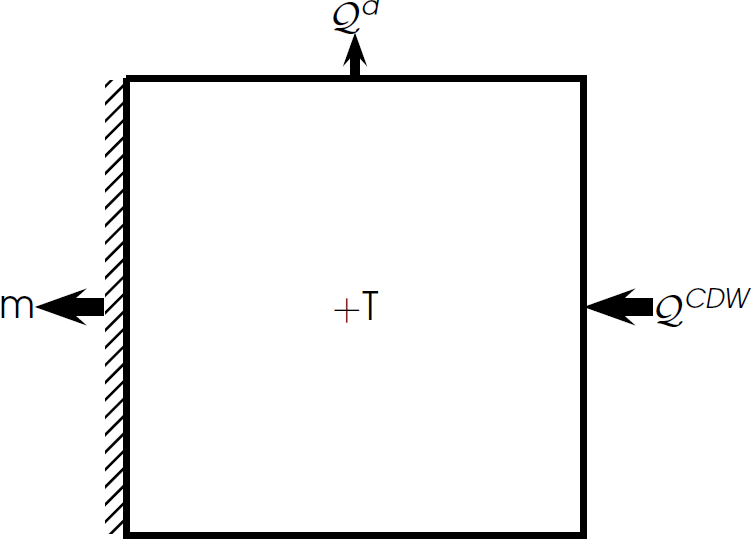
e.g. Pine Island Glacier (Jacobs et al., 2011)
Increased winds = increased ocean heat flux

Increased flux of CDW onshelf
SENSITIVITY to winds and mixing
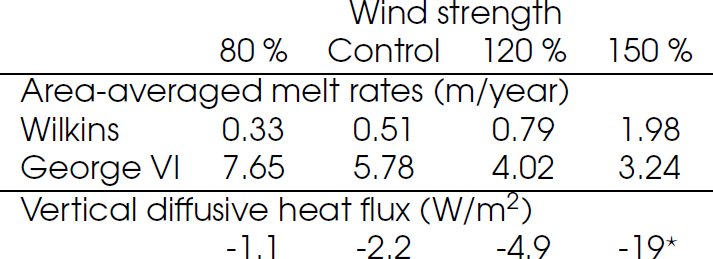
- Range of measured estimates (1–5 W/m2)
- ⋆ model blowup
- Dinniman et al. 2012. J. Clim.
Decreased winds = increased ocean heat flux

Decreased mixing leads to warmer CDW
Decreased atmos. heat loss = increased melt

increased ATMOS. HEAT LOSS = decreased MELT
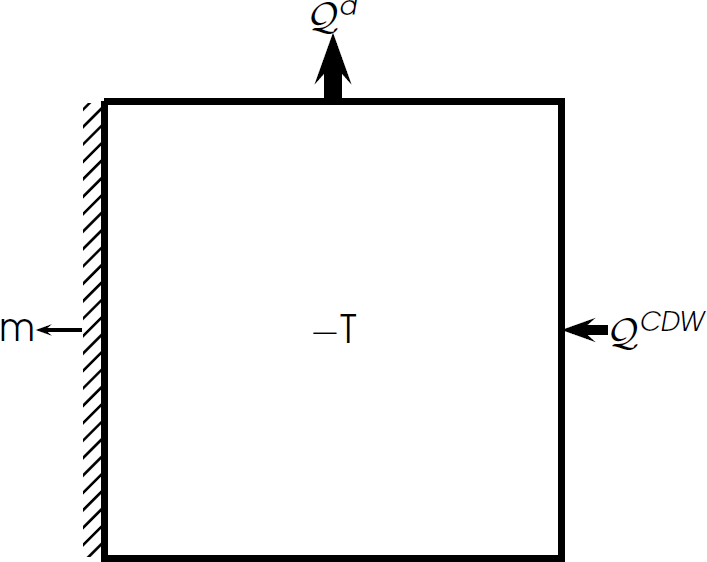
- Mertz Glacier Tongue (Cougnon et al., Oct 2013)
- Totten Glacier (Khazendar et al., Dec 2013)
Mertz polynya-melt relationship
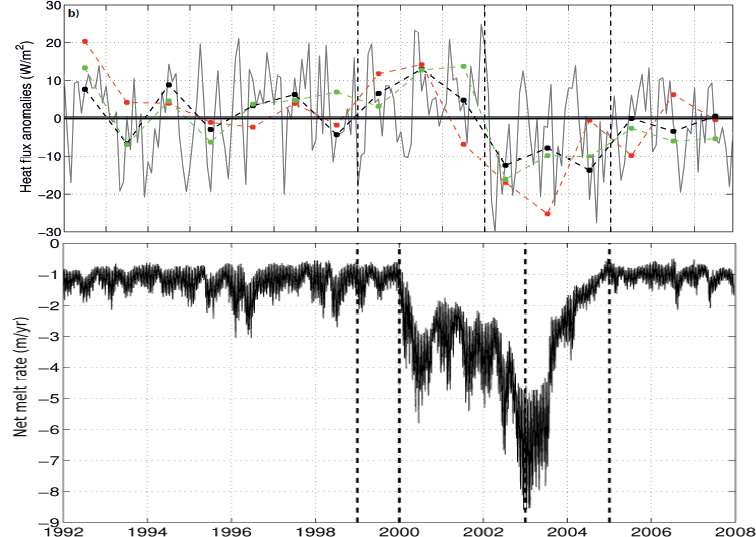
Cougnon et a. 2013. JGR – Oceans
Totten thinning possibly due to polynya change
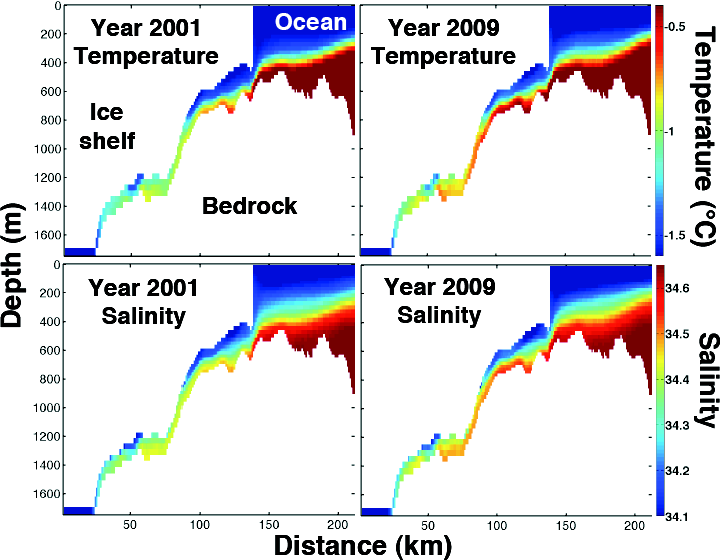
Khazendar et al. (2013)
model results
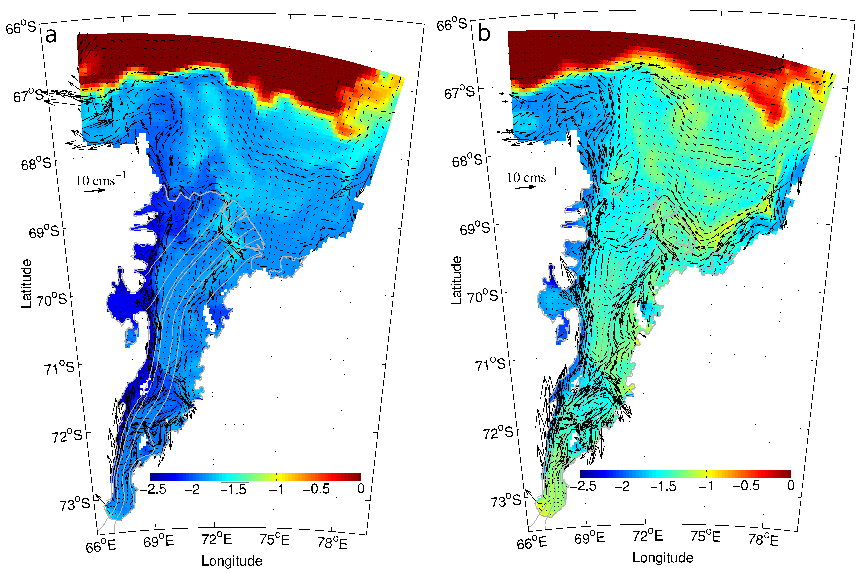
- Left (0.74 m/year) mid-winter snapshot
- Right (1.35 m/year) BP intensity reduced by 90%
IN SITU obs. warmer than -1.9 C (red)
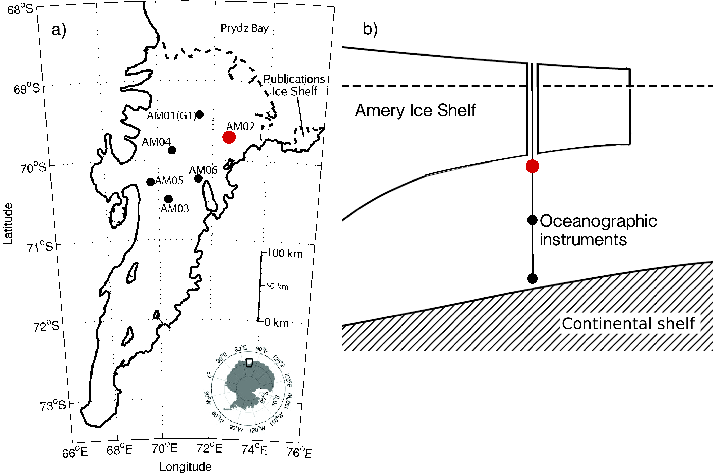
AMery Ice Shelf Ocean Research (AMISOR) Experiment; Craven and many others (1999--2012)
Ocean temperature at AM02 (bottom panel)
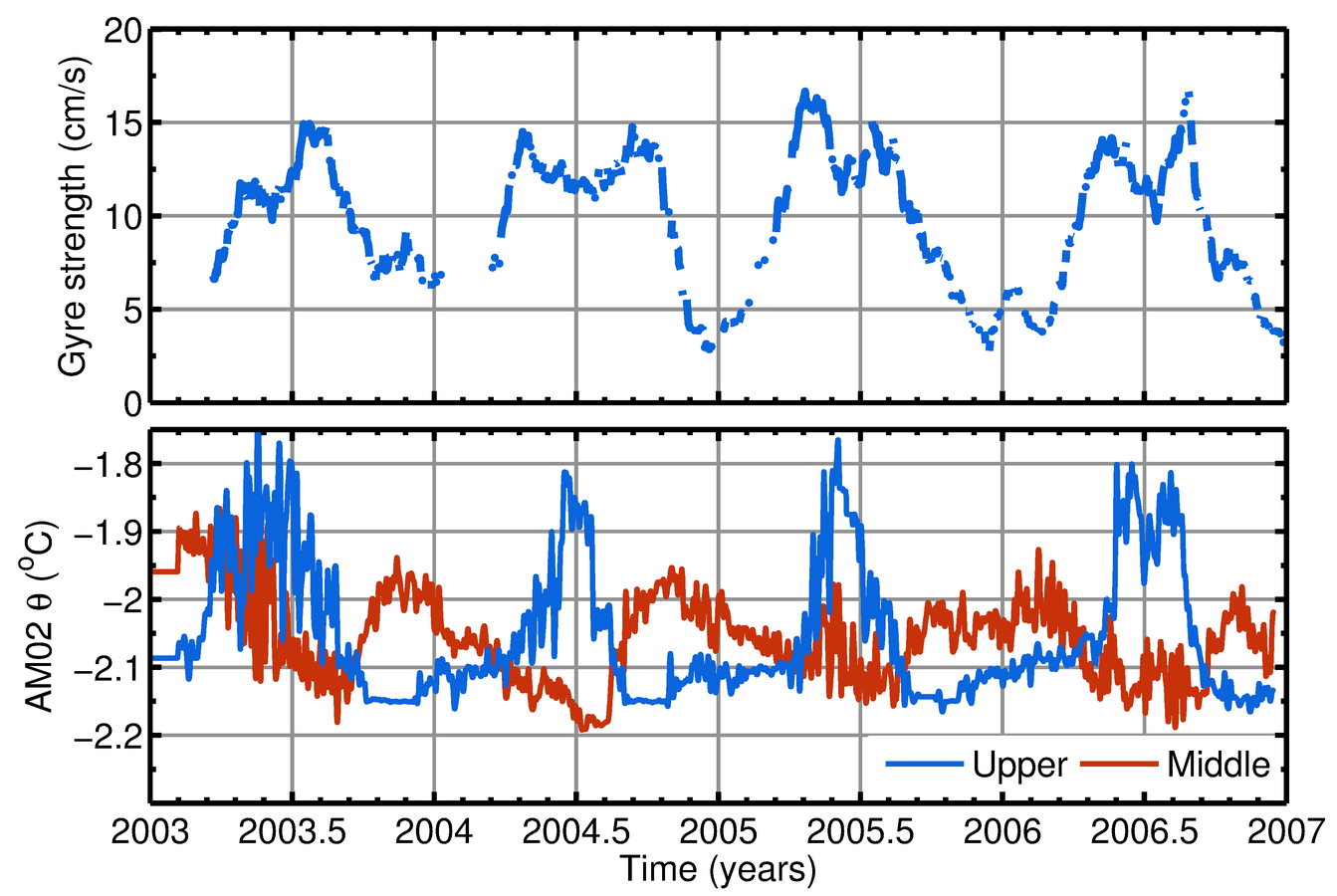
schematic

summary
- Antarctic ice shelves are an important part of the global system, including for sea level and the global thermohaline circulation
- The freezing point temperature decreases with increasing pressure, which in general means that deeper ice melts faster.
- The ocean heat available for melting is determined by the onshelf flow of deep waters and the loss of heat to the atmosphere (mainly through sea ice growth).
- Ocean forcing driving ice shelf basal melting is complex. The response depends on many factors, for example cavity and continental shelf geometry, frontal dynamics, winds, mixing and sea ice growth processes.
summer interships 2015/16
- 8-12 weeks (with stipend)
- mid to late undergraduate/honours students
- Ben.Galton-Fenzi@aad.gov.au
- http://acecrc.org.au/

KSA102
By Ben Galton-Fenzi
KSA102
Ice/Ocean interaction
- 683



